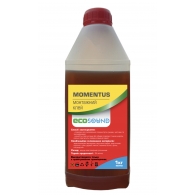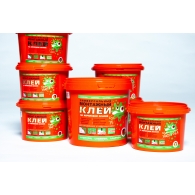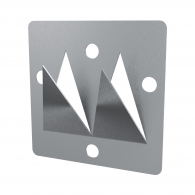Adhesives
-
Adhesive for acoustic foam rubber and panels Momentus 1 kg ..$12.31
-
Professional glue of the European standard - ready to application. A new formula of acrylic co-polymers with a small amount of water is used. Environmentally friendly, product of "GREEN CHEMISTRY". Specially designed for bonding most building materials. Main properties: Glue homogeneou..$43.75
-
The Ecosound Foam Clip 5x5 metal part is designed to firmly fix acoustic panels, acoustic foam and bass traps. Used on almost any surface. Fasteners are made of high quality material, easy to use, fully fulfills its purpose. Metal fasteners have a simple installation and fastening method. Depending..$0.96
Adhesives play a crucial role in a variety of industries, from construction to manufacturing, and even in everyday household tasks. They are used to bond materials together, creating strong and durable connections that can withstand a range of conditions. One common application for adhesives is in the installation of acoustic foam rubber, which is used to absorb sound and reduce noise levels in various settings.
Acoustic foam rubber is a popular choice for soundproofing because of its ability to dampen sound waves and improve acoustics in a space. Whether it's a home recording studio, a music rehearsal space, or a noisy office environment, acoustic foam rubber can help create a quieter and more comfortable environment. However, in order for the foam rubber to be effective, it must be properly installed using a suitable adhesive.
When it comes to choosing an adhesive for acoustic foam rubber, there are several factors to consider. The adhesive must be strong enough to bond the foam rubber to the desired surface, but also flexible enough to allow for the natural movement of the foam. Additionally, the adhesive should be resistant to moisture and temperature changes, as these can affect the integrity of the bond over time.
In the USA, there are several adhesive options available for installing acoustic foam rubber. One popular choice is spray adhesive, which is easy to apply and provides a strong bond between the foam rubber and the surface. Spray adhesive is also convenient for large installations, as it can cover a wide area quickly and evenly.
Another common adhesive used for acoustic foam rubber in the USA is contact cement. Contact cement is a strong adhesive that forms a permanent bond when the two surfaces are pressed together. It is ideal for bonding materials that are difficult to clamp or hold in place while the adhesive sets. Contact cement is also resistant to moisture, making it a suitable choice for acoustic foam rubber installations in high-humidity environments.
In addition to spray adhesive and contact cement, there are also specialized adhesives designed specifically for acoustic foam rubber. These adhesives are formulated to provide the necessary bond strength and flexibility required for soundproofing applications. They are often water-based and low-VOC, making them safe to use in indoor environments.
Overall, choosing the right adhesive for acoustic foam rubber is essential for a successful installation. By considering factors such as bond strength, flexibility, and resistance to moisture, you can ensure that your soundproofing project will be effective and long-lasting. Whether you opt for spray adhesive, contact cement, or a specialized adhesive, make sure to follow the manufacturer's instructions for proper application and curing times to achieve the best results.

















